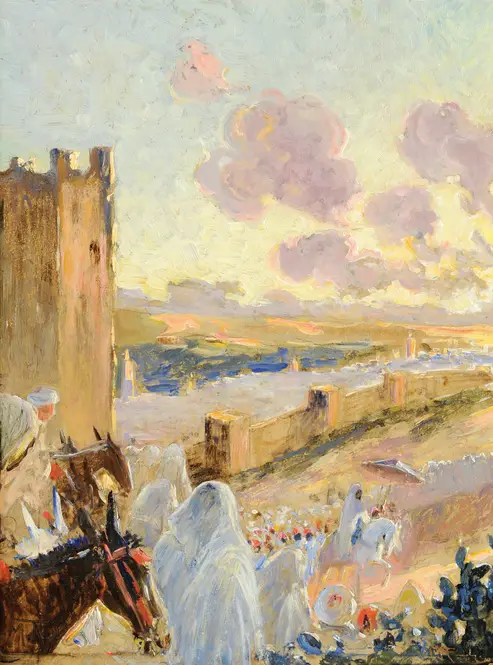Maurice Romberg de Vaucorbeil
Maurice Romberg de Vaucorbeil (1860–1940), French, Though not a household name, this French painter carved out a quiet but distinctive niche in late 19th- and early 20th-century art. Working primarily in oils and watercolors, he captured landscapes and urban scenes with a delicate balance of realism and atmospheric impressionism. His brushwork often softened edges, lending a dreamlike quality to views of Parisian boulevards or the sun-dappled countryside. Unlike the bold strokes of the Post-Impressionists, his technique favored subtle gradations of light, suggesting fleeting moments rather than monumental drama.
Romberg de Vaucorbeil’s work occasionally flirted with Symbolist themes—hazy twilight scenes or solitary figures lost in thought—but avoided overt mysticism. Instead, he found poetry in the everyday: a rain-slicked cobblestone street, the glow of gas lamps at dusk. Critics of his time noted his "quiet virtuosity," though commercial success eluded him. Today, his pieces surface mostly in regional auctions or museum storage, cherished for their muted elegance. A handful of canvases reside in lesser-known French collections, where they whisper rather than shout their charm. His legacy lingers in the way he turned transient light into something almost tactile, proving that not all art demands fireworks to leave a mark.
Romberg de Vaucorbeil’s work occasionally flirted with Symbolist themes—hazy twilight scenes or solitary figures lost in thought—but avoided overt mysticism. Instead, he found poetry in the everyday: a rain-slicked cobblestone street, the glow of gas lamps at dusk. Critics of his time noted his "quiet virtuosity," though commercial success eluded him. Today, his pieces surface mostly in regional auctions or museum storage, cherished for their muted elegance. A handful of canvases reside in lesser-known French collections, where they whisper rather than shout their charm. His legacy lingers in the way he turned transient light into something almost tactile, proving that not all art demands fireworks to leave a mark.
-

The Sultan Going Out
Maurice Romberg de Vaucorbeil (French, 1860–1940)A vibrant depiction of a sultan’s procession, rich with detail and ceremonial splendor, blending authority with quiet introspection.
